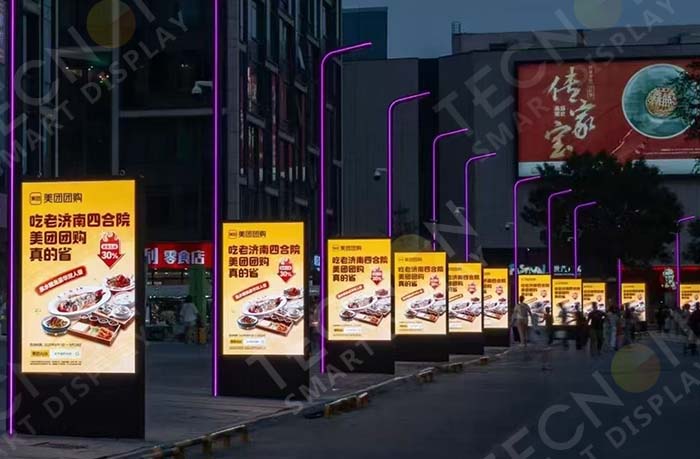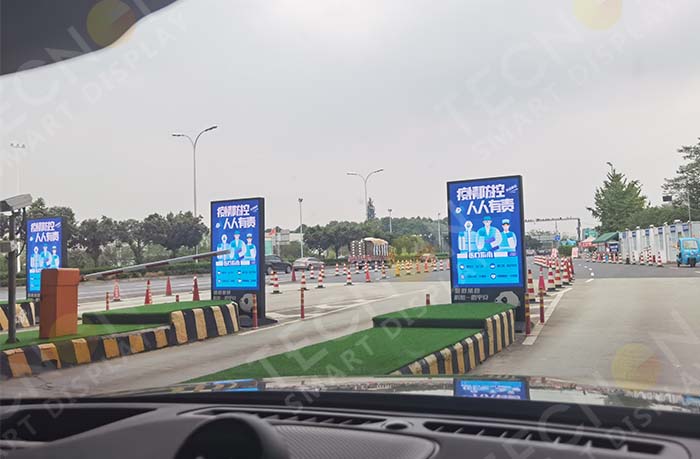Why Weather Matters for LED Totem Signage
Outdoor displays face constant exposure to the environment, and LED totem signage is no exception. While these installations are designed for durability, weather plays a critical role in determining how long they perform effectively. Understanding the relationship between climate and lifespan helps businesses and operators protect their investment.

Heat and Sun Exposure
High temperatures and direct sunlight can cause stress on LED components. Excessive heat leads to faster aging of diodes, power supplies, and circuit boards. Bright sunlight also challenges the screen’s visibility. To address this, many LED totem signage providers use advanced heat dissipation systems and high-brightness panels. These solutions keep performance stable and extend service life.
Rain and Humidity
Moisture is another major factor. In coastal or tropical cities, LED digital signage often faces high humidity levels. Over time, this can corrode electronic parts if the enclosure is not properly sealed. Heavy rain poses risks as well, especially when water seeps through weak cabinet joints. For this reason, smart LED totem manufacturers design enclosures with IP65 or higher ratings, ensuring resistance against water intrusion.

Cold Weather and Snow
Low temperatures affect LED modules differently. Cold climates reduce the efficiency of batteries and can cause screen flickering during startup. Snow accumulation adds weight and pressure to the structure, creating risks if the frame is not engineered properly. Modern outdoor LED totems often include temperature control systems that stabilize performance in extreme cold.
Wind and Dust
Strong winds and dust storms create additional stress. A tall large vertical LED totem screen faces constant wind load, which can weaken the foundation or cause vibrations that affect alignment. Dust particles, on the other hand, can settle inside ventilation systems and reduce cooling efficiency. Engineering a wind-resistant LED totem with proper sealing and anchoring significantly increases stability.

Seasonal Shifts and Long-Term Impact
It is not only extreme events but also seasonal changes that affect longevity. Repeated cycles of heat, cold, moisture, and dryness gradually degrade materials. Over years, even high-quality LED signage can lose brightness or show color shifts. Preventive maintenance and timely replacement of parts are essential to keep the totem functional for the long term.
Extending Lifespan with Smart Design
To maximize durability, operators should consider the following design and maintenance strategies:
- Choose weatherproof enclosures with tested IP ratings.
- Use anti-corrosion materials like aluminum alloys for coastal installations.
- Install ventilation and cooling systems for high-temperature regions.
- Plan wind-resistant foundations for tall or freestanding LED totem signage.
- Schedule regular inspections to detect early signs of wear.
These practices not only protect the structure but also keep content delivery smooth and reliable.
Conclusion: Weather-Ready LED Totem Signage
Weather has a direct impact on the lifespan of LED totem signage. From heat and rain to wind and snow, each condition poses unique challenges. By combining smart engineering with regular maintenance, businesses can safeguard their displays and ensure long-term performance. A well-designed totem is more than a display; it becomes a durable communication tool built to thrive in its environment.
 Tecnon Smart Display Technology Shenzhen Co., Ltd.
Tecnon Smart Display Technology Shenzhen Co., Ltd.